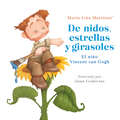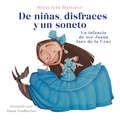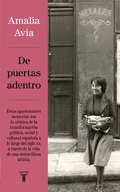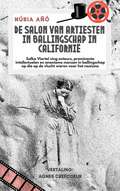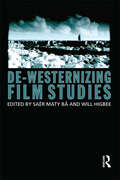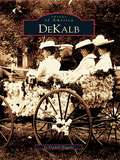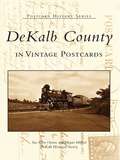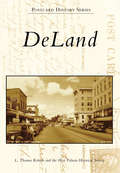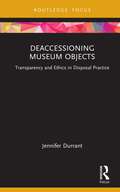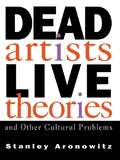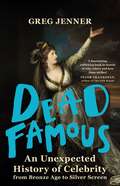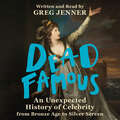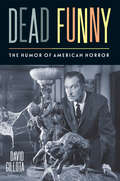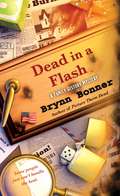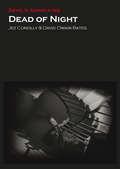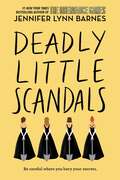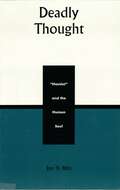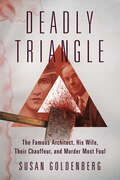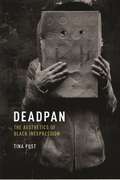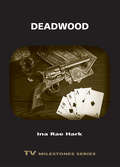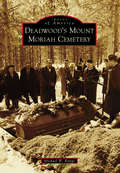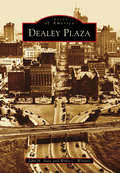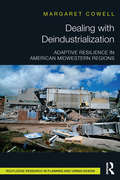- Table View
- List View
De nidos, estrellas y girasoles: El niño Vincent van Gogh
by Mario Iván MartínezTodos conocemos la obra de Vincent van Gogh, pero ¿sabes cómo fue que se inició en el arte? En una pequeña ciudad en Holanda vive el travieso Vincent van Gogh, un pelirrojo con las mejillas llenas de pecas al que le encanta meterse en problemas. Junto a su inseparable hermano Theo, pasa sus tardes buscando nidos y mirando las estrellas, descubriendo una manera de ver el mundo que hoy puedes encontrar en pinturas colgadas en museos de muchos países. Aquí conocerás cómo fue la niñez de este famoso pintor impresionista y cómo inició su camino para convertirse en uno de los artistas más reconocidos de todos los tiempos.
De niñas, disfraces y un soneto: La infancia de sor Juana Inés de la Cruz
by Mario Iván MartínezSeguro que has escuchado hablar de sor Juana Inés de la Cruz, pero ¿sabes cómo se convirtió en la Décima Musa? En una hacienda a la falda de los volcanes, Juana Inés vive con su entrañable abuelo, su madre y su querida hermana Josefa, rodeada de libros y siempre acompañada por su perro xoloitzcuintle. Pronto Juana Inés se enamora del maravilloso mundo que se esconde detrás de las letras y, al pie de la pintura de la virreina, escribe los más hermosos poemas. Descubre cómo fue la niñez de sor Juana Inés de la Cruz, ¡la poeta más destacada que dejó Nueva España!
De puertas adentro (Memorias Y Biografías/taurus Ser.)
by Amalia AviaEstas apasionantes memorias son la crónica de la transformación política, social y cultural española a lo largo del siglo XX a través de la vida de una maravillosa artista. Amalia Avia, figura esencial en el arte contemporáneo en España, nos abrió en estas memorias las puertas de una vida llena de contrastes, teñida de tonos oscuros pero también de luces brillantes, que se inició en Madrid, a comienzos de los años treinta, en el seno de una familia burguesa. Su primera infancia tuvo el país en guerra como fondo. La posguerra, el luto y los desfiles triunfantes inauguraron un periodo de tristeza y desconcierto y, también, una nueva etapa en el pequeño pueblo manchego en el que pasó diez años. Con firmes pinceladas realistas, la autora retrata el enorme contraste de su vida madrileña y el medio rural en los años cuarenta en el que se desarrolló su adolescencia: el culto a los muertos, los días de costura, iglesia, juegos, lectura y excursiones al monte, la cocina, la cosecha, el ganado, la matanza y las fiestas populares constituyen fascinantes relatos de memoria histórica. La vuelta a Madrid y su formación como pintora en el estudio Peña marcaron un periodo muy fértil. Su relación con otros artistas y escritores, el matrimonio con Lucio Muñoz, sus primeras exposiciones, el Círculo de Bellas Artes, la maternidad, los viajes y la oposición al Régimen marcaron el sendero que culminaría en la apertura del país a la democracia y en la madurez de Amalia Avia como mujer y como pintora. Reseñas:«Amalia Avia logró inscribirse con luz propia en la historia del arte español del siglo XX. Sus memorias no solo son un testimonio precioso sobre su propia vida y la de su generación, sino también la revelación de su rica y compleja intimidad.»Francisco Calvo Serraller, El País «Amalia Avia es la pintora de las ausencias, la amarga cronista del por aquí pasó la vida marcando su amargura e inevitable huella de dolor, como en las novelas de los maestros rusos del XIX.»Camilo José Cela «Amalia Avia fue la cronista melancólica, en grises, de un cierto Madrid de toda la vida, ese Madrid de los portales, de las tiendas antañonas, de las tabernas, de las tascas, de los garajes. Sus memorias son excelentes.»Juan Manuel Bonet «Sus memorias podrían ser un cuadro. Nada extraño si consideramos que su autora es pintora, y de las buenas. Ha elegido la sinceridad que, aliada con la sencillez, traza un retrato no ya de sí misma, sino de una etapa de la vida española que perteneció a muchos que, sin duda, se reconocerán a través de ella.»Trinidad De León-Sotelo, ABC
De salon van artiesten in ballingschap in Californië: Salka Viertel ving acteurs, intellectuelen en anonieme op die op de vlucht waren voor het nazisme
by Núria AñóSalka Viertel ving acteurs, prominente intellectuelen en anonieme mensen in ballingschap op die op de vlucht waren voor het nazisme. Een biografie over Salka Viertel, een Joodse actrice die naar Hollywood emigreerde en in de volksmond bekend werd als de scenarioschrijfster van de Zweedse actrice Greta Garbo. Bovendien had zij een salon in Santa Monica, Californië, die werd bezocht door veel van de Europese intelligentsia in ballingschap. Salka was een zeer moderne en interessante vrouw voor haar tijd, die bekendheid verdient. In het boek komen onderwerpen aan de orde als de vermeende biseksualiteit van Salka Viertel en het aantal bekende vrienden dat zij had, om er maar een paar te noemen: Albert Einstein, Charles Chaplin, Sergei Eisenstein, F.W. Murnau, Max Reinhardt, Arnold Schönberg, Thomas Mann, Bertolt Brecht, Greta Garbo, Montgomery Clift... Ook had zij, net als Gertrude Stein en andere notoire vrouwen, haar eigen literaire salon die bezocht werd door schrijvers als Truman Capote, Christopher Isherwood, Gore Vidal en een lange enzovoort. Andere thema's zijn Berlijn in de jaren 1920; de overgang van stomme films naar de geluidsfilms, gezien vanuit het Mekka van Hollywood. Dan is er de opkomst van Hitler en wat dat betekende voor de Joden; de ballingschap van die intellectuelen die niet naar hun land konden terugkeren vanwege de Tweede Wereldoorlog. Later, de Koude Oorlog en de heksenjacht tegen het communisme. Het is duidelijk dat het leven van Salka Viertel en haar vriendenkring zich afspeelt tegen de achtergrond van de grote gebeurtenissen van de 20e eeuw. Met dit project verkreeg de auteur de beurzen van het Shanghai Writing Program (China, 2016) en het Baltic Centre (Zweden, 2017). "Een zeer interessant verhaal en ik denk zelfs in deze tijd zeer actueel, want in mijn ogen hebben we niet veel vooruitgang geboekt op het punt van de acceptatie van "intermenselijke gevoelens" in het algemeen. Een geweldig en zeer interessant boek over Hollywoo
De-Westernizing Film Studies
by Will Higbee Saër Maty BâDe-Westernizing Film Studies aims to consider what form a challenge to the enduring vision of film as a medium - and film studies as a discipline - modelled on ‘Western’ ideologies, theoretical and historical frameworks, critical perspectives as well as institutional and artistic practices, might take today. The book combines a range of scholarly writing with critical reflection from filmmakers, artists & industry professionals, comprising experience and knowledge from a wide range of geographical areas, film cultures and (trans-)national perspectives. In their own ways, the contributors to this volume problematize a binary mode of thinking that continues to promote an idea of ‘the West and the rest’ in relation to questions of production, distribution, reception and representation within an artistic medium (cinema) that, as part of contemporary moving image culture, is more globalized and diversified than at any time in its history. In so doing, De-Westernizing Film Studies complicates and/or re-thinks how local, national and regional film cultures ‘connect’ globally, seeking polycentric, multi-directional, non-essentialized alternatives to Eurocentric theoretical and historical perspectives found in film as both an artistic medium and an academic field of study. The book combines a series of chapters considering a range of responses to the idea of 'de-westernizing' film studies with a series of in-depth interviews with filmmakers, scholars and critics. Contributors: Nathan Abrams, John Akomfrah, Saër Maty Bâ, Mohammed Bakrim, Olivier Barlet, Yifen Beus, Farida Benlyazid, Kuljit Bhamra, William Brown, Campbell, Jonnie Clementi-Smith, Shahab Esfandiary, Coco Fusco, Patti Gaal-Holmes, Edward George, Will Higbee, Katharina Lindner, Daniel Lindvall, Teddy E. Mattera, Sheila Petty, Anna Piva, Deborah Shaw, Rod Stoneman, Kate E. Taylor-Jones
DeKalb (Images of America)
by Jo Fredell HigginsDeKalb was originally known as Huntley's Grove, named after Russell Huntley, an early settler who was one of its founders. The area had also been known as Buena Vista and DeKalb Center, before settling on the name DeKalb in 1881. The name was derived from Baron Johann DeKalb (1721-1780), a German soldier who served under Washington at Valley Forge and died a Revolutionary War hero. Three august DeKalb men are credited with the invention of barbed wire and began manufacturing it in 1873. Today DeKalb is a world leader in hybrid seed development and genetic research, as well as the home of Northern Illinois University.
DeKalb County in Vintage Postcards (Postcard History)
by DeKalb Historical Society Megan Milford Sue Ellen OwensBefore Fulton County, there was DeKalb County; before Atlanta, there was Decatur. It is a community rich in history and the "mother county" of the city of Atlanta. A tiny town called Terminus was established in 1846 and from this early settlement in DeKalb County, the South's most thriving city, its cosmopolitan center, was born. DeKalb County in Vintage Postcards depicts the tranquil days before the boom of Atlanta, revealing a landscape unfamiliar to present-day residents of the area. Postcard scenes of the famed Stone Mountain, Camp Gordon, and the historic neighborhood of Druid Hills are featured within these pages, along with a variety of churches and educational institutions.
DeLand (Postcard History Series)
by West Volusia Historical Society L. Thomas RobertsWhen Henry A. DeLand sat down to plan a town in the summer of 1876, he envisioned a place that would become "a religious, educational, business, and social center"--the Athens of Florida. He made his dream a reality by investing his livelihood in the town that would be named for him. DeLand donated the land for the first municipal building that doubled as a church and school and funded the school that would become Stetson University. Ever since, the city of DeLand has had an interesting and rich history. Much of this unique history has been captured and preserved in postcards published throughout the past hundred-plus years.
Deaccessioning Museum Objects: Transparency and Ethics in Disposal Practice (Museums in Focus)
by Jennifer DurrantDeaccessioning Museum Objects is an innovative exploration of museum collections management practice and the ethical complexities of object disposal within the contemporary social context.Disposal of objects from museum collections aids in the creation of dynamic and sustainable institutions but can be perceived as a betrayal of public trust and professional duty. Written by an experienced museum professional and researcher, Jennifer Durrant delves into the historical development of disposal to offer insight into the fundamental transience of museum collections. Durrant explains the ethical timeliness and social responsibility of object removal, presenting real‑life examples and practical models for transparency creation to show how deaccessioning can be brought to public view and understanding. Emphasising the interaction between professional practice, personal action, and the centrality of conscious reflection, Durrant helpfully investigates what ‘open and honest’ working entails and explores the creation of transparency to museum practices through the lens of disposal.The combination of theory and practice within Deaccessioning Museum Objects is essential reading for academics and students of museums and heritage, and practitioners in museums, galleries, libraries, and archives around the world.
Dead Artists, Live Theories, and Other Cultural Problems (Cultural Studies And Sociology Ser.)
by Stanley AronowitzFirst Published in 1994. Routledge is an imprint of Taylor & Francis, an informa company.
Dead Famous: An Unexpected History of Celebrity from Bronze Age to Silver Screen
by Greg JennerDuring these extraordinary times Greg Jenner is able to sign you a personalised bookplate for your hardback. Please email info@gregjenner.com with the name you would like the book dedicated to and the postal address. 'Fizzes with clever vignettes and juicy tidbits... [a] joyous romp of a book.' Guardian'A magical mystery tour through the history of celebrity - eye opening, provocative, triumphant.' Kate Williams, bestselling author and historian'A fascinating, rollicking book in search of why, where and how fame strikes. Sit back and enjoy the ride.' Peter FrankopanCelebrity, with its neon glow and selfie pout, strikes us as hypermodern. But the famous and infamous have been thrilling, titillating, and outraging us for much longer than we might realise. Whether it was the scandalous Lord Byron, whose poetry sent female fans into an erotic frenzy; or the cheetah-owning, coffin-sleeping, one-legged French actress Sarah Bernhardt, who launched a violent feud with her former best friend; or Edmund Kean, the dazzling Shakespearean actor whose monstrous ego and terrible alcoholism saw him nearly murdered by his own audience - the list of stars whose careers burned bright before the Age of Television is extensive and thrillingly varied. Celebrities could be heroes or villains; warriors or murderers; brilliant talents, or fraudsters with a flair for fibbing; trendsetters, wilful provocateurs, or tragic victims marketed as freaks of nature. Some craved fame while others had it forced upon them. A few found fame as small children, some had to wait decades to get their break. But uniting them all is the shared origin point: since the early 1700s, celebrity has been one of the most emphatic driving forces in popular culture; it is a lurid cousin to Ancient Greek ideas of glorious and notorious reputation, and its emergence helped to shape public attitudes to ethics, national identity, religious faith, wealth, sexuality, and gender roles. In this ambitious history, that spans the Bronze Age to the coming of Hollywood's Golden Age, Greg Jenner assembles a vibrant cast of over 125 actors, singers, dancers, sportspeople, freaks, demigods, ruffians, and more, in search of celebrity's historical roots. He reveals why celebrity burst into life in the early eighteenth century, how it differs to ancient ideas of fame, the techniques through which it was acquired, how it was maintained, the effect it had on public tastes, and the psychological burden stardom could place on those in the glaring limelight. DEAD FAMOUS is a surprising, funny, and fascinating exploration of both a bygone age and how we came to inhabit our modern, fame obsessed society.
Dead Famous: An Unexpected History of Celebrity from Bronze Age to Silver Screen
by Greg Jenner'Fizzes with clever vignettes and juicy tidbits... [a] joyous romp of a book.' Guardian'A magical mystery tour through the history of celebrity - eye opening, provocative, triumphant.' Kate Williams, bestselling author and historian'A fascinating, rollicking book in search of why, where and how fame strikes. Sit back and enjoy the ride.' Peter FrankopanCelebrity, with its neon glow and selfie pout, strikes us as hypermodern. But the famous and infamous have been thrilling, titillating, and outraging us for much longer than we might realise. Whether it was the scandalous Lord Byron, whose poetry sent female fans into an erotic frenzy; or the cheetah-owning, coffin-sleeping, one-legged French actress Sarah Bernhardt, who launched a violent feud with her former best friend; or Edmund Kean, the dazzling Shakespearean actor whose monstrous ego and terrible alcoholism saw him nearly murdered by his own audience - the list of stars whose careers burned bright before the Age of Television is extensive and thrillingly varied. Celebrities could be heroes or villains; warriors or murderers; brilliant talents, or fraudsters with a flair for fibbing; trendsetters, wilful provocateurs, or tragic victims marketed as freaks of nature. Some craved fame while others had it forced upon them. A few found fame as small children, some had to wait decades to get their break. But uniting them all is the shared origin point: since the early 1700s, celebrity has been one of the most emphatic driving forces in popular culture; it is a lurid cousin to Ancient Greek ideas of glorious and notorious reputation, and its emergence helped to shape public attitudes to ethics, national identity, religious faith, wealth, sexuality, and gender roles. In this ambitious history, that spans the Bronze Age to the coming of Hollywood's Golden Age, Greg Jenner assembles a vibrant cast of over 125 actors, singers, dancers, sportspeople, freaks, demigods, ruffians, and more, in search of celebrity's historical roots. He reveals why celebrity burst into life in the early eighteenth century, how it differs to ancient ideas of fame, the techniques through which it was acquired, how it was maintained, the effect it had on public tastes, and the psychological burden stardom could place on those in the glaring limelight. DEAD FAMOUS is a surprising, funny, and fascinating exploration of both a bygone age and how we came to inhabit our modern, fame obsessed society.
Dead Famous: An Unexpected History of Celebrity from Bronze Age to Silver Screen
by Greg Jenner'Fizzes with clever vignettes and juicy tidbits... [a] joyous romp of a book.' Guardian'A fascinating, rollicking book in search of why, where and how fame strikes. Sit back and enjoy the ride.' Peter Frankopan, author of The Silk Roads'[An] engaging and well-researched book... Jenner brings his material to vivid life' ObserverCelebrity, with its neon glow and selfie pout, strikes us as hypermodern. But the famous and infamous have been thrilling, titillating, and outraging us for much longer than we might realise. Whether it was the scandalous Lord Byron, whose poetry sent female fans into an erotic frenzy; or the cheetah-owning, coffin-sleeping, one-legged French actress Sarah Bernhardt, who launched a violent feud with her former best friend; or Edmund Kean, the dazzling Shakespearean actor whose monstrous ego and terrible alcoholism saw him nearly murdered by his own audience - the list of stars whose careers burned bright before the Age of Television is extensive and thrillingly varied. In this ambitious history, that spans the Bronze Age to the coming of Hollywood's Golden Age, Greg Jenner assembles a vibrant cast of over 125 actors, singers, dancers, sportspeople, freaks, demigods, ruffians, and more, in search of celebrity's historical roots. He reveals why celebrity burst into life in the early eighteenth century, how it differs to ancient ideas of fame, the techniques through which it was acquired, how it was maintained, the effect it had on public tastes, and the psychological burden stardom could place on those in the glaring limelight. DEAD FAMOUS is a surprising, funny, and fascinating exploration of both a bygone age and how we came to inhabit our modern, fame obsessed society.
Dead Funny: The Humor of American Horror
by David GillotaHorror films strive to make audiences scream, but they also garner plenty of laughs. In fact, there is a long tradition of horror directors who are fluent in humor, from James Whale to John Landis to Jordan Peele. So how might horror and humor overlap more than we would expect? Dead Funny locates humor as a key element in the American horror film, one that is not merely used for extraneous “comic relief” moments but often serves to underscore major themes, intensify suspense, and disorient viewers. Each chapter focuses on a different comic style or device, from the use of funny monsters and scary clowns in movies like A Nightmare on Elm Street to the physical humor and slapstick in movies ranging from The Evil Dead to Final Destination. Along the way, humor scholar David Gillota explores how horror films employ parody, satire, and camp to comment on gender, sexuality, and racial politics. Covering everything from the grotesque body in Freaks to the comedy of awkwardness in Midsommar, this book shows how integral humor has been to the development of the American horror film over the past century.
Dead in a Flash (A Family History Mystery #4)
by Brynn BonnerThe charming genealogical gumshoes in the cozy southern Family History Mystery series give new meaning to the old saying "keep the home fires burning" when their investigation into a long-ago house fire leads to a modern-day murder.It's not just politics as usual when genealogists Sophreena McClure and Esme Sabatier are hired to create scrapbook tributes for a former North Carolina senator's intricate family heritage and illustrious career. Sifting through the ashes of his past, they discover his baby brother perished in a suspicious fire that burned down his childhood home. Still saddened by his late parents' steadfast conviction--against all evidence to the contrary--that the fire was cover for a kidnapping, the senator wants this rumor put to rest once and for all. So with only snapshots of the evidence, Soph and Esme are determined to smother all speculation about the decades-old tragedy. The party lines are drawn when a shocking present-day murder turns up new candidates for the crime--including some suspects from the senator's inner circle. Are the sleuthing scrapbookers trying to pin down a killer as adept at making laws as breaking them?
Dead of Night
by Jez Conolly David O. BatesReleased a matter of days after the end of the Second World War and a dozen years ahead of the first full-blooded Hammer Horror, the Ealing Studios horror anthology film Dead of Night featured contributions from some of the finest directors, writers and technicians ever to work in British film. Since its release it has become evermore widely regarded as a keystone in the architecture of horror cinema, both nationally and internationally, yet for a film that packs such a reputation this is the first time a single book has been dedicated to its analysis. Beginning with a brief plot précis 'road map' in order to aid navigation through the film's stories, there follows a discussion of Dead of Night's individual stories, including its frame tale ('Linking Narrative'), a consideration of the potency of stillness and the suspension of time as devices for eliciting goose bumps, an appraisal of the film in relation to the very English tradition of the festive ghost story, and an analysis of the British post-war male gender crisis embodied by a number of the film's protagonists. The book includes a selection of rarely seen pre-production designs produced by the film's acclaimed production designer, Michael Relph.
Dead of Night (Devil's Advocates)
by Jez Conolly David O. BatesReleased a matter of days after the end of the Second World War and a dozen years ahead of the first full-blooded Hammer Horror, the Ealing Studios horror anthology film Dead of Night featured contributions from some of the finest directors, writers and technicians ever to work in British film. Since its release it has become evermore widely regarded as a keystone in the architecture of horror cinema, both nationally and internationally, yet for a film that packs such a reputation this is the first time a single book has been dedicated to its analysis. Beginning with a brief plot précis 'road map' in order to aid navigation through the film's stories, there follows a discussion of Dead of Night's individual stories, including its frame tale ('Linking Narrative'), a consideration of the potency of stillness and the suspension of time as devices for eliciting goose bumps, an appraisal of the film in relation to the very English tradition of the festive ghost story, and an analysis of the British post-war male gender crisis embodied by a number of the film’s protagonists. The book includes a selection of rarely seen pre-production designs produced by the film’s acclaimed production designer, Michael Relph.
Deadly Little Scandals (Debutantes #2)
by Jennifer Lynn BarnesNo one is quite who they seem to be in the twisty, soapy, gasp-inducing world of the Debutantes by Jennifer Lynn Barnes, #1 bestselling author of The Inheritance Games. Think of the White Gloves like the Junior League— by way of Skull and Bones. Reluctant debutante Sawyer Taft joined Southern high society for one reason and one reason alone: to identify and locate her biological father. But the answers Sawyer found during her debutante year only left her with more questions and one potentially life-ruining secret. When her cousin Lily ropes her into pledging a mysterious, elite, and all-female secret society called the White Gloves, Sawyer soon discovers that someone in the group's ranks may have the answers she's looking for. Things are looking up . . . until Sawyer and the White Gloves make a disturbing discovery near the family's summer home—and uncover a twisted secret, decades in the making.** Check out Jennifer Lynn Barnes&’s bestselling The Naturals and Inheritance Games series!!
Deadly Triangle: The Famous Architect, His Wife, Their Chauffeur, and Murder Most Foul
by Susan GoldenbergGlamorous young wife Alma Rattenbury takes her chauffeur as a lover and their scandalous relationship leads to a murder most foul.The 1935 murder of architect Francis Mawson Rattenbury, famous for his design of the iconic Parliament Buildings and Empress Hotel in Victoria, British Columbia, and the arrest and lurid trial of his 30-years-younger second wife, Alma, and the family chauffeur, George Percy Stoner, her lover, riveted people.Francis and Alma had moved to Bournemouth, England, after the City of Victoria had ostracized them for their scandalous, flagrant affair while Francis was married to his first wife. Their life in Bournemouth was tangled. Francis became an impotent lush. Deprived of sexual gratification, Alma seduced George, previously a virgin who was half her age. They conducted their affair in her upstairs bedroom with her and Francis’s six-year-old son in a nearby bed, “sleeping,” she said, and the near-deaf Francis in his armchair downstairs in a drunken stupor.The lovers were tried together for Francis’s murder at the Old Bailey Criminal Court in London, resulting in intense public interest and massive, frenzied media coverage. The trial became one of the 20th century’s most sensational cases, sparking widespread debate over sexual mores and social strata distinctions.
Deadpan: The Aesthetics of Black Inexpression (Minoritarian Aesthetics #1)
by Tina PostWinner of the 2023 National Book Critics Circle Award for CriticismWinner of the 2023 ASAP Book Prize, given by the Association for the Study of the Arts of the PresentExplores expressionlessness, inscrutability, and emotional withholding in Black cultural productionArguing that inexpression is a gesture that acquires distinctive meanings in concert with blackness, Deadpan tracks instances and meanings of deadpan—a vaudeville term meaning “dead face”—across literature, theater, visual and performance art, and the performance of self in everyday life.Tina Post reveals that the performance of purposeful withholding is a critical tool in the work of black culture makers, intervening in the persistent framing of African American aesthetics as colorful, loud, humorous, and excessive. Beginning with the expressionless faces of mid-twentieth-century documentary photography and proceeding to early twenty-first-century drama, this project examines performances of blackness’s deadpan aesthetic within and beyond black embodiments, including Young Jean Lee’s The Shipment and Branden Jacobs-Jenkins’s Neighbors, as well as Buster Keaton’s signature character and Steve McQueen’s restitution of the former’s legacy within the continuum of Black cultural production. Through this varied archive, Post reveals how deadpan aesthetics function in and between opacity and fugitivity, minimalism and saturation, excess and insensibility.
Deadwood
by Ina Rae HarkConsiders the HBO series Deadwood in the context of the television Western genre and the intersection of capital and violence in American history.
Deadwood's Mount Moriah Cemetery (Images of America)
by Mike RungeNestled on a mountainous plateau overlooking Deadwood’s downtown core district is one of the premier historic cemeteries in Black Hills: Mount Moriah Cemetery. Established in 1878, this cemetery contains some of North America’s most recognized Western legends, including James Butler “Wild Bill” Hickok, Martha “Calamity Jane” Canary, Seth Bullock, John “Potato Creek Johnny” Perrett, and Henry Weston “Preacher” Smith. They represent a small portion of the more than 3,600 people buried in Mount Moriah whose memories have been carved, chiseled, and etched into the monuments within this cemetery. Deadwood’s Mount Moriah Cemetery is a combination of historic and contemporary photographs chronicling the history of the cemetery and the stories of the individuals—both colorful and illustrious—who helped carve Deadwood into the annals of the American West.
Dealey Plaza
by John H. Slate Willis C. WintersDealey Plaza is famous for many things, both locally and nationally. Considered "the front door of Dallas," the park rests on a bluff near the Trinity River, where Dallas's founder, John Neely Bryan, identified a natural low-water crossing in 1841. This ford was the site of Bryan's cabin and was also the site of the first ferry and bridge over the Trinity River. Home to several Dallas County buildings and other historic structures, Dealey is not just the birthplace of Dallas; it is also the site of Dallas's first large-scale city planning solution, a traffic diverting triple underpass, and a beautiful downtown park built in the 1930s. The park was launched into national history when Pres. John F. Kennedy was assassinated here on November 22, 1963. Today, the site is visited by over two million annually. To preserve Dealey Plaza and its surrounding buildings, the federal government designated it a National Historic Landmark District in 1993.
Dealing with Deindustrialization: Adaptive Resilience in American Midwestern Regions
by Margaret CowellThe late 1970s and 1980s saw a process of mass factory closures in cities and regions across the Midwest of the United States. What happened next as leaders reacted to the news of each plant closure and to the broader deindustrialization trend that emerged during this time period is the main subject of this book. It shows how leaders in eight metropolitan areas facing deindustrialization strived for adaptive resilience by using economic development policy. The unique attributes of each region - asset bases, modes of governance, civic capacity, leadership qualities, and external factors - influenced the responses employed and the outcomes achieved. Using adaptive resilience as a lens, Margaret Cowell provides a thorough understanding of how and why regions varied in their abilities to respond to deindustrialization.
